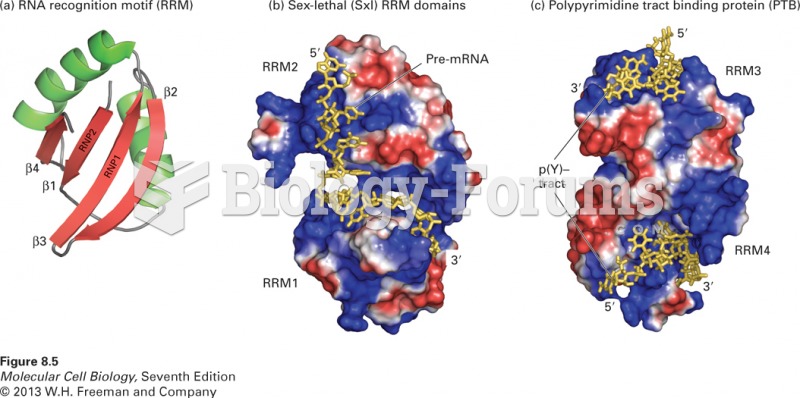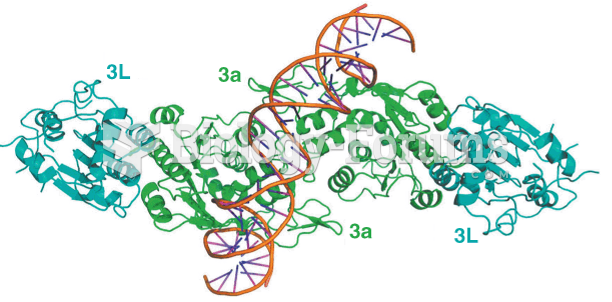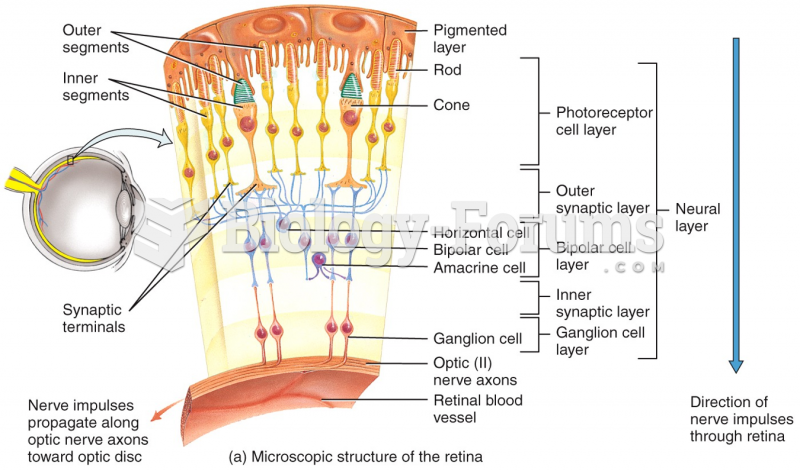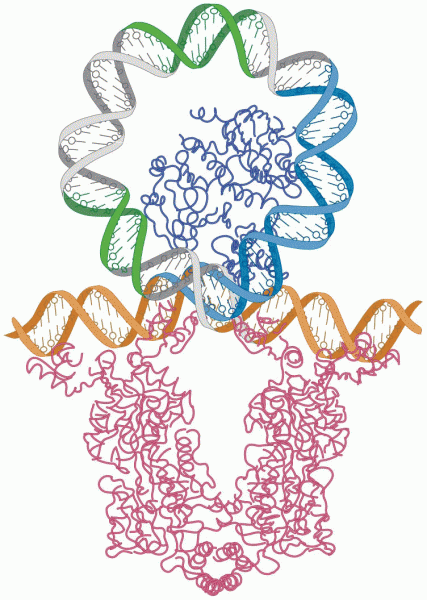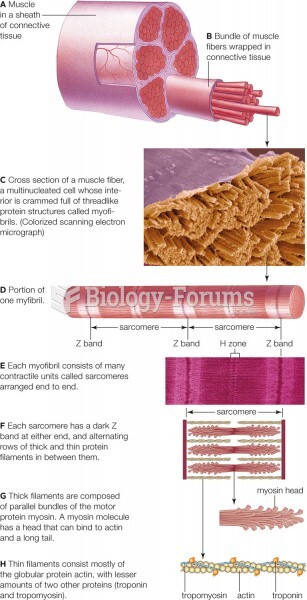Answer to Question 1
The fourth level of protein structure is called quaternary structure. Quaternary structure occurs when two or more polypeptide chains join together. This level of complexity is somewhat like putting two or three crumpled paper fans together. Not all proteins have a quaternary structure-only those made from more than one polypeptide chain. In addition to the quaternary structure, a nonprotein component called a prosthetic group must sometimes be positioned precisely within a protein for it to function. Prosthetic groups often contain minerals that are needed for the protein to carry out its purpose. Hemoglobin is an example of a protein with quaternary structure and prosthetic groups because it is made from four separate polypeptide chains, each of which contains an iron-containing prosthetic group called heme. Heme is the portion of hemoglobin that actually transports the oxygen and carbon dioxide gases in the blood.
Answer to Question 2
Diets of people who eat only plant based foods may be limited to incomplete proteins. Diverse foods with different incomplete proteins can be combined to provide adequate amounts of all the essential amino acids. This dietary practice, called protein complementation, is customary around the world, especially in regions that traditionally rely heavily on plant-based foods for protein. Examples of commonly consumed foods whose proteins complement each other are rice and beans, or corn and beans. Both rice and corn have several limiting amino acids (for example, lysine) but provide adequate amounts of others (for example, methionine). By contrast, dried beans and other legumes tend to be limiting in methionine but provide adequate amounts of lysine. In general, protein complementation allows diets containing a variety of plant-based protein sources to provide all of the necessary essential amino acids.


